Willow Tit Project
Get involved in our active conservation project as we work together to protect the red-listed willow tit.

Populations of willow tit have dramatically declined in the UK, with a decrease of 83% between 1995 and 2017, and they are now classed as a red-listed species in the UK.
This decline is believed to be due to habitat loss, nest hole competition from other birds, such as blue tit, and nest predation from great-spotted woodpecker.
WWT Washington Wetland Centre are incredibly fortunate to have a small population of willow tit on the reserve, and continue to manage the woodlands and other habitats to encourage them to stay.
At least three pairs of willow tit breed here, and because of its threatened status and preference for ‘wet woodland habitat’, the species is a priority species in the centre’s reserve management plan and a prime candidate as a ‘wet woodland’ flagship.
Image credit: Mark Whitelock
We need you!
To allow us to find out more about these secretive birds, we asked for your help and for the last couple of years, you’ve helped us build a picture about the movement and activity of willow tit around our site. We hope that this will support our goal of managing our wetland and woodland habitat to best establish and maintain a safe environment for this rare species to live and breed.
We’ve had dozens of sightings completed by our amazing visitors so far and we’d love to continue our citizen survey. So, we’re continuing to ask you to be our eyes and ears around our centre and reserve.
If you could give us some detail about your sightings, including a date, time and location, along with the number of willow tit seen and what they were doing (feeding, flying, resting, preening etc) this will help us with our research.
Email your sightingsHow to identify
Willow tit are similar in appearance to marsh tit, and so we thought it would be useful for you to better understand the visual and vocal differences between these two species, to help when identifying these birds while you’re out and about.
Check out the below image for some of the key visual identifiers.
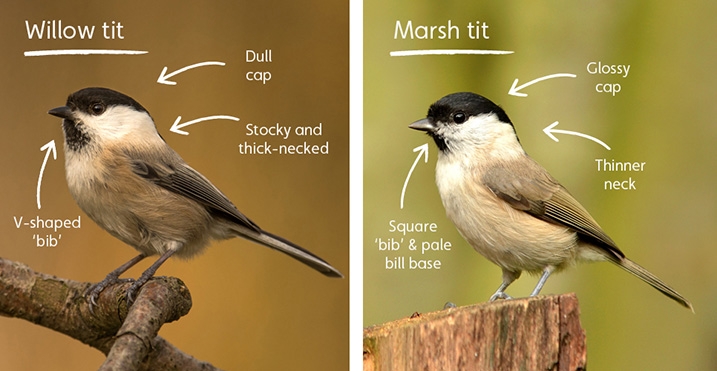
Another way to tell them apart is by their voice. Willow tit alarm call 'chay chay chay' or sing 'tui tui tui’ whereas marsh tit are a lot more variable and higher pitched. Listen to their faster call and their song. It can also sound more drawn out, faster or like a coal tit.
Audio credits (all Xeno Canto): Willow tit call - Beatrix Saadi-Varchmin; willow tit song - Philippe J. Dubois; marsh tit call - Benjamin Allegrini; marsh tit song - Beatrix Saadi-Varchmin.
Nesting willow tit
In 2023, WWT Washington’s reserve wardens tracked the movement of a paired male and female across our 100-acre site and were pleased to locate an active nest excavated from an old tree stump. The team set up cameras and monitored the nest, where eight eggs were found. Seven of these went on to hatch and successfully fledge – check out their development (video below).
Full breeding story 2023Throughout 2025, our team have continued monitoring all willow tit sightings and potential nesting sites, as well as completing callback surveys across the reserve. There have been some encouraging results with, wat least 2 groups of juveniles spotted, with ongoing sightings at the reservoir, Hawthorn Wood hide, Wet Wood and gully area near our otter exhibit in May and June 2025. The below video shows a couple of these juveniles with contact calls used to communicate between themselves.
Bird ringing
Our team, together with Whitburn Ringing Group and the BTO (British Trust for Ornithology) are doing ongoing bird ringing sessions at key parts of the year as part of our willow tit project. From the hundreds of birds caught and ringed so far over 2023, 2024 and 2025, there have been six willow tit, all now wearing a BTO metal ring on one leg and 2 colour rings on the other leg. The colour ringed birds are the ones to keep an eye out for as part of our project – red/white, red/yellow, red/blue, red/green, red/orange and red/black.
It's interesting to look at all the birds that were caught and ringed in the process – these ringed birds are added to the BTO register and can be tracked if ever caught again. It’s a great way for us to keep an eye on a bird’s movement around the country.
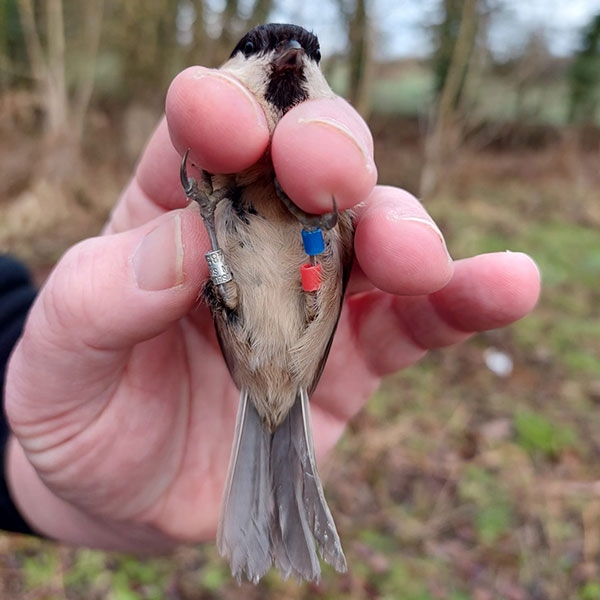
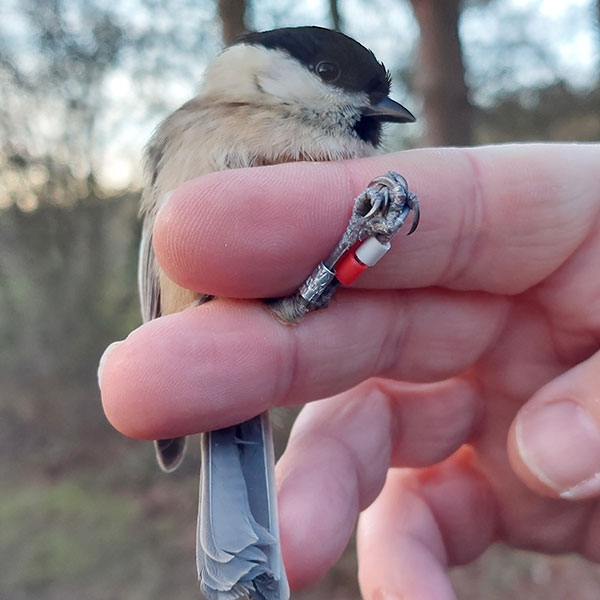
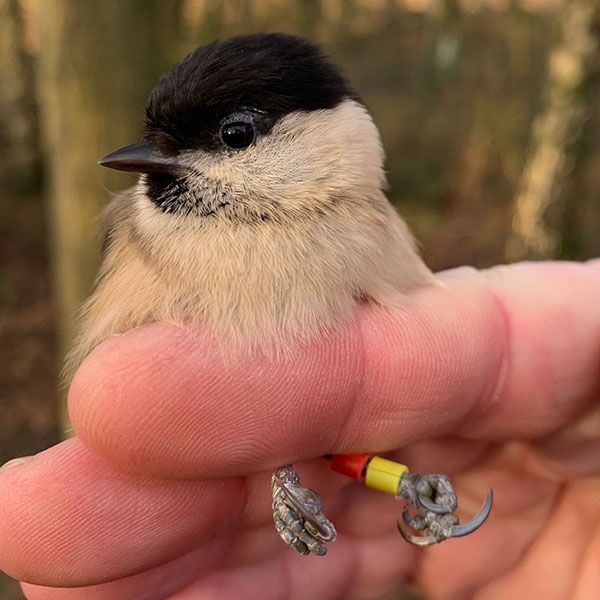
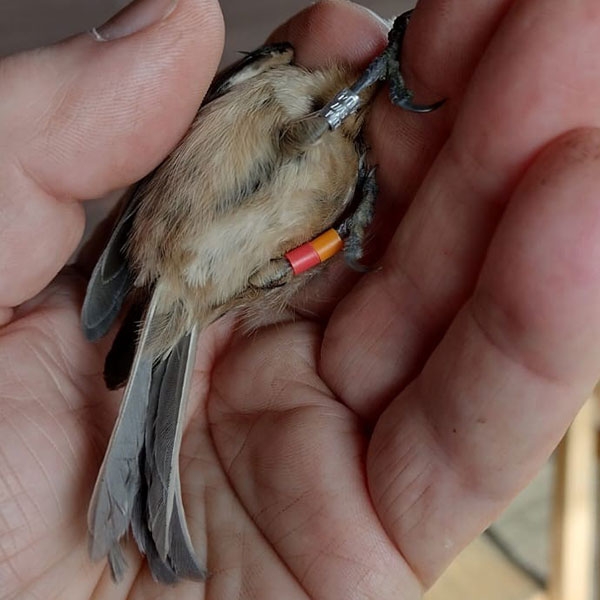
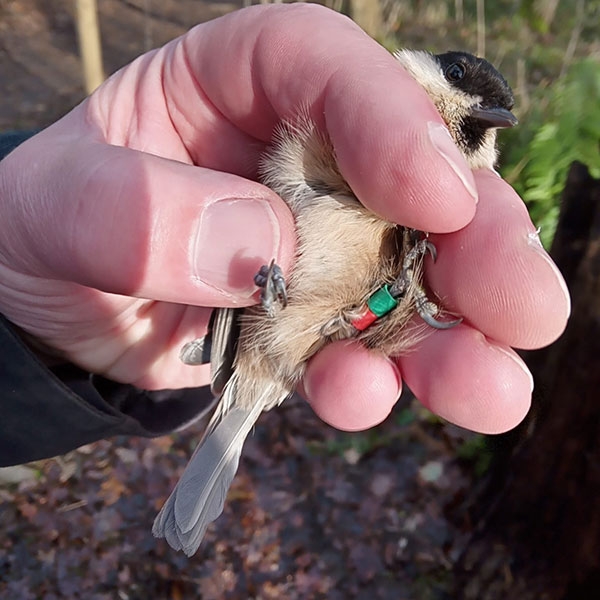
We will be arranging more ringing sessions in the future, many of which will be during normal opening hours and publicly accessible to visitors, allowing you to experience conservation research in action. Full details of these bird ringing sessions will be shared on our What’s On pages and social media closer to the time.